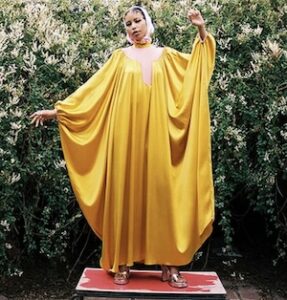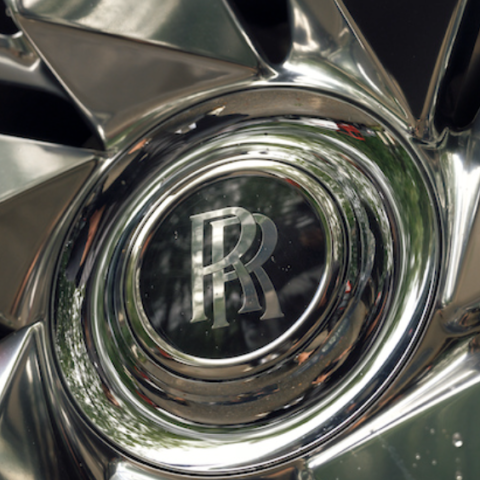Alexander McQueen, Love The Evolution with Seán McGirr
By Baishali Banerjee
If you know the British luxury fashion house, founded by the late Alexander McQueen you may well believe its signature was not only imaginative, seductive and astonishing, but sometimes controversial. His dramatic fashion shows were also of note initially at London Fashion Week and then at other fashion weeks around the world. After his tragic passing, his former right hand Sarah Burton took over the realm of the house. In February Dublin-born designer, Seán McGirr made his debut as the third name to helm the fashion house once Sarah had decided to step down. It asks a question of any new person that takes over a historical house, how do you deal with the legacy of the house? What can be reawakened of the original vision from Alexander McQueen? Yet at the same time bring modernity and personal signature to it? To know more, read Alexander McQueen, Love The Evolution with Seán McGirr.
When a legend such as Alexander McQueen passes on and leaves such a strong legacy, it cannot be easy to pick up the reigns. Especially if whoever takes over never knew the person. When Sarah Burton took over the house, she had worked with Lee McQueen for many years however, when the third designer took over earlier this year, his working world had never collided with the original designer.
This could not have been an easy endeavour for him. This first collection will always be interrogated in a way that one would not expect to happen down the line. The new name had to balance the heritage but bring their unique creative vision to it. On the surface, Sean’s collection was an echo of the house, but digging a little deeper, you see plenty of metaphors and direct links to the heritage of the house’s original owner and creator; here reinterpreted for a sure future, with a new signature.


Those who followed during the McQueen era of over two decades would know the designer explored a broad range of ideas and themes, including historicism, romanticism, femininity, sexuality, and death. The designer purposefully gained notoriety with controversial and shock tactics in his early collections, gaining him the nickname “L’Enfant Terrible” and also “the Hooligan of English fashion”.
Sarah Burton, after upholding the brand’s ideology for 13 years as creative director, stepped down. The newly appointed Irish-born, Dublin national designer, Seán McGirr previously headed the Ready-to-Wear line at another British house, JW Anderson.
The news of Sarah Burton’s resignation caught everyone in the fashion industry off guard. Throughout her career, she never stopped experimenting with new fabrics and methods, producing designs that were both striking to look at and powerful to wear. With her innovative and creative heritage and close relationship with the brand’s creator, Lee Alexander McQueen, the creative director’s departure signified the end of an era in the fashion industry. but also the beginning of a new one…
McQueen lovers waited with bated breath to see who would be chosen to reinterpret and bring out the best of his or her vision of McQueen.
This February in the outskirts of Paris, the new era of Alexander McQueen was presented. While rain poured outside, a young designer, Sean McGirr arrived with high standards to live up to and large shoes to fill. At the helm of Alexander McQueen, McGirr unveiled his eagerly awaited British House debut. While everyone gathered inside an underground industrial warehouse, the air was filled with speculation.
Does that ring a bell? Yes, this signifies a strong throwback as McQueen’s Spring Summer 1995 show, “The Birds” took place in a warehouse that was rumoured to be the site of underground parties, featuring a runway painted to simulate a street and a dirt floor covered in black tyre marks.
Many opined that this first collection from McGirr inevitably exhibited Jonathan Anderson’s humorous design language, which he had used to architect during his time at the brand. But that is a little unfair.
At the same time, succeeding the highly renowned Sarah Burton could not have been less of a challenge. As McQueen lovers, all are aware of the recognition that Burton received for both her business acumen and dedication to ethical and sustainable fashion.
Here, in this first show, he seemed to start to bridge his design worlds, that of his history and that of his future. Look past the surface, dig a little deeper and those who knew the McQueen brand and its historic collections would have seen many echoes, references and odes to the heritage of the house; here reworked with a new twist.
A plethora of references were obvious to those who know. For example McQueen’s 1995 Spring/Summer “The Birds” which McGirr recalled and revisited in the first look, saw a model wrapped in a compressed latex dress. Here in this version, with this model, wrapped up in a black puckered latex dress saw McGirr’s exploration; his unique take.
McGirr also seems to have looked into continuing his way on the McQueen legacy by showing ‘skin’ through sheer fabric. McQueen was known for his ideal silhouette that highlighted the body’s erogenous zones. McGirr addressed it as the “rough glamour” and seemed to have been strongly inclined to explore it.
As you keep looking, the cross-bar, which referenced a sculptural necklace from the Birds’ opening appearance, is the collection’s main motif. It can be spotted on leather cross-bar purses and pouches, as well as on earrings, cuffs, rings, and chokers in crystal and silver metal, thanks to jewellery partner to Alexander McQueen, Shaun Leane.
Speaking of Shaun Leane, the long-time collaborator, the metal works McGirr may have utilised as a reference from the Savage Beauty event from 2011 at the Victoria and Albert Museum



Interestingly the most eye-catching design by McGirr joins an extensive collection of outlandish McQueen shoes, including the “armadillo” shoes that Lady Gaga is known for having worn.
McGirr also threw a glimmer of his native land. Intriguingly, his addition to the dizzying archive consists of a line of boots modelled by the form and mass of horse hooves, ostensibly drawn from the native travellers of his native Ireland. The models of the hoof boots walked with a characteristic clip-clop. To top it all off, horseshoes were attached to the soles of the boots.
McGirr played around with some sizeable knitwear in circular geometry in a variety of colours including dark blue, black, and green. This visual dates back to one of the earliest collections of McQueen, Highland Rape, although very poorly received critically, it cemented his reputation in the industry of fashion.
The original collection featured knits mostly in dark colours, such as black and grey, with accents of red and yellow from the family tartan and the uncommon blue, green, or violet in big sculptural shapes.
In the McGirr Collection, one can mostly spot chunky wool knits and plasticised fur effects. This trend continues into jubilant ensembles like “natural wool” coats and dresses, “hand-knitted” wool jumpers with a chunky knit, and coats and jackets with rounded shoulders that create a wing effect.
As a matter of carrying forward the legacy of the fashion house, Sydney Bryan who consulted on knitwear in the early days of the label has joined back again. Hence a feeling of continuing and moving forward with heritage this season; again with McGirr’s playful take.




“I feel like Lee McQueen’s message that he put out into the world is so relevant…I’m into this idea of anti-politeness, because we live in a very polite world at the moment, and so his message is more relevant than ever.”
-Seán McGirr
McGirr also chose to indulge in some pinstripe in his debut. Those who are fans of the 1996 collection, entitled Dante, or who were lucky enough to be at the show will know the clever use of pinstripe which showed Lee McQueen as a genius cutter. In the Dante Collection, pinstripe featured heavily throughout the show.
Digging into some of Burton’s past Collections, the 2013 Autumn Winter Mens’ Collection by Sarah Burton featured Suit jackets with the trademark McQueen’s pagoda shoulders which creates a striking and strong silhouette and teamed with leather brogue slippers and pinstripe socks. One can see quite a few of those references in the present-day collection.


“With McQueen, there’s a vocabulary, there’s a peak lapel, there’s a strong shoulder, there’s a waist…And I feel like my job is really to bring a new energy to that.”
-Sean McGirr
The black and white suits that were free and casual and loose in the leg and highly structured across the upper torso echoed the power and pinched midsections of McQueen’s design, producing an impression of “singular characters that have a powerful personality,” McGirr, stated backstage.


Despite this, McQueen never gave much clarity in terms of men’s fashion. The men’s side of the fashion house was closed by the founder in 2002, but it was resurrected in 2010. Burton for that matter, although never hosted men’s runway shows, was well-represented on red carpets, especially with her sharply tailored formalwear, due to stars like Timothée Chalamet.


McGirr on the contrary, not frightened to take the bull by the horns took on menswear for his first show too. He could have taken the easy option and just shown womenswear but instead, he dived right in and presented both men’s and women’s. After all Alexander McQueen was no shy and retiring wallflower. The three final “car dresses” fashioned of curved steel were more like fantastical concepts of clothing.



“It should have sort of playful aggression to it, and should be kind of uplifting because I want to bring a kind of lightness to McQueen,”
-McGirr to Vogue.
Come September he will present his second full show for the brand, but in between he has shown a Pre S/S 25 collection following on from some of the themes seen he has started to make his own.






His start at the house is a thoughtful and respectful take for McGirr. It is no easy feat to walk in the steps of past greatness to look at the signatures of a house and make it his own. Here McGirr has looked back at the genius before his reign and now looks forward, taking this heritage on anew with his unique take.
If you enjoyed reading Alexander McQueen Love The Evolution with Seán McGirr, try reading The Representation of the Body in Contemporary Art.
.Cent magazine London, Be Inspired; Get Involved








